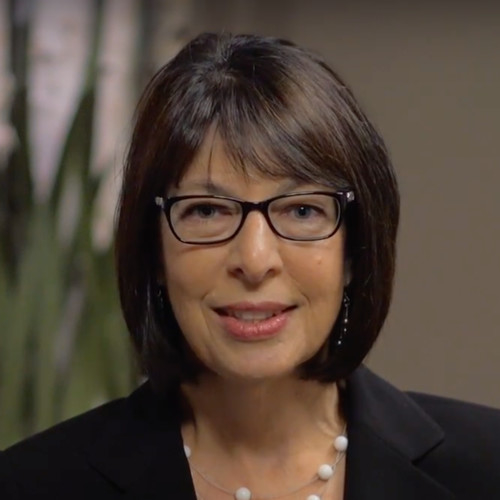
1 What is a cover letter?
2 How to tackle cover letters
Essentially, a cover letter is your statement of intention to apply for a job, and some gosh darn good reasons why you're a perfect fit for it.
3 What to include in a cover letter
- Mention the company in the opening line - show from the get-go this ain’t no copy and paste job.
- Demonstrate some knowledge of the organisation - whether through an impressive statistic, a landmark in the company history or an example of its recent activity.
- Show why you would be perfect for that specific role - keep referring back to the job description, the role responsibilities and the attributes they’re looking for.
- Bring in relevant experience - what specific elements of your CV tie in perfectly with this role?
- Show some ideas - be proactive and show what you would bring to the table if they were to hire you.
4 Cover letter do’s and don’t’s
5 The formalities of cover letter writing
First things first
Who is the letter addressed to? Do you know the name of the staff member it will be heading to? Check the email address and job description to see if you can find a name. If not, stick to either Dear Sir/Madam, Dear [Insert job title here], or if you’re going a little more informal (think SMEs etc) Dear [Insert company name] team. Don’t stress about it, as long as you’re polite and at the right level of formality, you’ll be fine.Curtain call
The show’s over and now you need to wrap it up. So how do you end? The general rule is that if you’re writing to a specific, named person, you close with ‘Yours sincerely’, but if the letter is directed to the more general ‘Sir/Madam’, go with ‘Yours faithfully’. However these rules are becoming a bit more old fashioned, and don’t hold as much authority as they used to. For more informal applications signing off with ‘Kind regards’ or ‘Many thanks’ might be perfectly acceptable.In your CV your previous experience and qualifications do all the work for you, but in your cover letter it’s up to you to sell yourself.
6 Tailor made cover letters fit best
Start with the basics
Check the company website, its Wikipedia page, social media channels and all the usual avenues. Get a basic feel for the company, what its values are and where it’s situated within the market.Choose your specialist subject
For example, if you’re applying to a newsroom, look into one of their biggest scoops, how they uncovered the story and then reported it. If it’s a law firm, look at some of their biggest cases, what the challenges were and how they overcame them. If it’s a manufacturing firm, look at one of their products and how it has impacted the market. This will give you something to draw upon in your cover letter that will make you sound much more knowledgeable.Suggest changes
Pick an element of the company that would be under your remit in the prospective role; its social media channels, for example. Say what you think the company are doing well, but also think about ways you could improve and slot that in too. Just don’t be too critical.Think outside the box
Do they have any open days coming up? They’re a great way to gain insider knowledge about the organisation. Debut regularly organises events like livestreams and networking with companies to help you learn more about the culture and recruitment process. These are all really helpful ways of enhancing your application and showing you’re dedicated to the company. Interested How Long Should a Cover Letter be?Keep it short and snappy; around 400-500 words and definitely no longer than one A4 page.
7 How to sell yourself in a cover letter (Without sounding like an awful human being)
- Always back yourself up with facts - Don’t just say you’re ‘amazing’ at social media, use a specific example to show how. You might have helped increase your student newspaper Facebook page by several hundred likes, for example.
- Choose your words carefully - don’t be too over the top. Try words like skilled/proficient/driven/adept/experienced/adaptable. Avoid brilliant/amazing/superior/the best.
- Don’t be afraid to talk about the things you want to learn and how the company will help you to achieve that. They’re not expecting you to be a fully formed genius.
8 The Nitty Gritty: How to structure a cover letter
Example cover letter structure:
Your name
Address
Email address
Optional: Links to website, LinkedIn, Twitter
Dear [Name, Sir/Madam, Job title or company] Paragraph one: Introduce yourself and why you think you would be perfect for the advertised role. Keep the company and its mission at the forefront. Depending on the formality of the company, maybe think of an interesting hook to grab their attention. Example: Most students think of the graduate recruitment process as arduous and boring. Debut is completely revolutionising this perception, and I think I have the creative drive and energy to thrive within such a groundbreaking organisation. Paragraph two: This is when you bring in the knowledge and experience you have to back up the assertions you make in paragraph one. What work experience have you completed that has prepared you for this role? How has your degree or society involvement helped too? Just don’t repeat your CV, always keep referring back to the company and the job description. Example: During my time at university, I helped organise a series of unique careers events to help connect students with companies in the local area, showing I am adept at approaching external clients and coordinating large scale projects. Paragraph three: Move your focus back to the company itself now. Talk about some aspects of the company’s operations you admire, but also suggest ways in which you think they could improve. Suggest some ideas of things you would like to do if you were to secure the role. Example: Debut’s Insight section is a fantastic resource for student and graduates looking for unique insights about recruitment, but I think more could be done to tackle the barriers that young people face when seeking employment. I would like to write about topics such as student mental health and unpaid internships that I think have a major effect on young people. Paragraph four: Now it’s time to wrap up. Bring all your points together in a succinct summary statement about why you think you would be ideal for the role. Don’t forget to thank your reader for their time as well. Example: Altogether, I think my previous experience shows that I am tenacious and resilient in the work I do, and combined with my passion for helping young people fulfil their career aspirations, I think I would be perfect for the role. Thank you for taking the time to read my application and I look forward to hearing from you. Yours sincerely/Yours faithfully/ Many thanks Your name [Hand sign this if sending by post.] So there you have it! We’re not denying that cover letters can be a pain, especially when it takes time to tailor them for each application, but if you get it right, you’re guaranteed to be one step closer to that all-important interview. Just follow Debut’s step-by-step guide, and pair it up with a cracking CV, and you’ll be flying.UK Cover Letter Format
In the UK, cover letters are expected to be formal and well-structured. It's customary to address the cover letter to a specific person whenever possible, using "Dear Mr./Ms. [Last Name]" or "Dear Hiring Manager" if the name isn't provided. UK employers value a clear and concise format that begins with a brief introduction stating the position applied for and where it was advertised.
British cover letters typically highlight key achievements and experiences that directly relate to the job requirements. It's crucial to demonstrate knowledge of the company and its industry, showing a genuine interest in how your skills and background align with their organizational goals. UK candidates often emphasize their qualifications and how they can contribute to the company's success, ending the letter with "Yours sincerely" or "Yours faithfully" followed by their name to maintain a professional tone.
Cover Letter Example for a UK Company
Jane Doe
123 Any Street
London, SW1A 1AA
[email protected]
01234 567890
5 July 2024
Mr. John Smith
ABC Corporation
456 Business Road
Manchester, M1 1AA
Dear Mr. Smith,
I am writing to apply for the Marketing Manager position advertised on LinkedIn. With a Master’s degree in Marketing and over 10 years of experience in digital marketing, I am confident in my ability to drive successful campaigns and increase brand visibility for ABC Corporation.
In my previous role at XYZ Ltd., I led a team that successfully increased online engagement by 50% through innovative social media strategies. This experience has equipped me with the skills necessary to develop and execute effective marketing plans. I am particularly excited about ABC Corporation’s recent launch of its new product line and am eager to bring my expertise to your dynamic team.
I am enthusiastic about the opportunity to contribute to ABC Corporation’s continued growth and success. I have attached my CV for your review and would welcome the opportunity to discuss how my background and skills can be beneficial to your team.
Thank you for considering my application. I look forward to the possibility of discussing this exciting opportunity with you.
Yours sincerely,
Jane Doe
USA Cover Letter Format
In the USA, cover letters vary in format but generally follow a business formal approach. It's common to begin with a direct address, using "Dear Mr./Ms. [Last Name]" or "Dear Hiring Manager" if specific contact information isn't available. American cover letters typically start with a compelling introduction that states the position applied for and where it was found, followed by a concise summary of qualifications and relevant experience.
US employers appreciate cover letters that showcase accomplishments and specific examples of how skills have contributed to previous roles. It's essential to customize each cover letter to match the job description and align with the company's values and culture. American candidates often include a call to action, expressing enthusiasm for the opportunity to discuss their qualifications further. Ending with "Sincerely" followed by their name or "Best regards" maintains a professional tone and readiness for further communication.
Cover Letter Example for a USA Company
John Smith
789 Main Street
New York, NY 10001
[email protected]
(123) 456-7890
July 5, 2024
Ms. Sarah Johnson
XYZ Inc.
123 Corporate Avenue
San Francisco, CA 94111
Dear Ms. Johnson,
I am writing to express my interest in the Software Engineer position listed on Indeed. With a Bachelor’s degree in Computer Science and over 5 years of experience in software development, I am confident in my ability to contribute effectively to XYZ Inc..
At my previous job at Tech Solutions, I developed and implemented software solutions that increased operational efficiency by 30%. My expertise in programming languages such as Python and Java, along with my strong problem-solving skills, make me a strong candidate for this position. I am particularly impressed with XYZ Inc.’s commitment to innovation and excellence in the tech industry.
I am eager to bring my technical skills and experience to XYZ Inc. and contribute to your team’s success. I have attached my resume for your review and would welcome the opportunity to discuss how my background and skills can be beneficial to your team.
Thank you for considering my application. I look forward to the possibility of discussing this exciting opportunity with you.
Sincerely,
John Smith
Australia Cover Letter Format
In Australia, cover letters typically follow a concise and professional format. It's crucial to address the cover letter to a specific person whenever possible, using "Dear Mr./Ms. [Last Name]". Australians appreciate a direct and straightforward approach that highlights relevant skills and experiences clearly linked to the job requirements. It's common to include achievements and specific examples of how your skills have contributed to previous roles. Additionally, demonstrating knowledge of the company and its values is highly valued, showing a genuine interest in the organization's culture and goals.
Australians also expect cover letters to be well-structured and error-free, reflecting attention to detail. The use of Australian job boards like Seek is prevalent, and candidates are encouraged to tailor each cover letter to the specific job listing to emphasize fit and suitability for the role. Closing with "Yours sincerely" followed by your name maintains a professional tone, signaling readiness for further communication.
Cover Letter Example for an Australia Company
Emma Brown
12 Green Street
Sydney, NSW 2000
[email protected]
(02) 1234 5678
5 July 2024
Mr. Robert Wilson
Aussie Tech Ltd.
34 Business Avenue
Melbourne, VIC 3000
Dear Mr. Wilson,
I am writing to apply for the Project Manager position advertised on Seek. With a Master’s degree in Project Management and over 8 years of experience managing large-scale projects, I am confident in my ability to contribute effectively to Aussie Tech Ltd..
In my previous role at Down Under Projects, I successfully managed projects that resulted in a 20% increase in productivity. My experience in team leadership and resource management makes me a strong candidate for this position. I am particularly impressed by Aussie Tech Ltd.’s commitment to innovation and sustainable practices.
I am eager to bring my project management skills to Aussie Tech Ltd. and contribute to your team’s success. I have attached my CV for your review and would welcome the opportunity to discuss how my background and skills can be beneficial to your team.
Thank you for considering my application. I look forward to the possibility of discussing this exciting opportunity with you.
Yours sincerely,
Emma Brown
Canada Cover Letter Format
In Canada, cover letters are seen as an essential part of the job application process, providing candidates with an opportunity to expand on their resume and demonstrate fit for the role. It's customary to begin with a formal greeting, addressing the hiring manager by name if possible, using "Dear Mr./Ms. [Last Name]". Canadian employers appreciate cover letters that not only summarize qualifications but also showcase a candidate's understanding of the company's goals and how they align with their own career aspirations.
Canadian cover letters often highlight specific achievements and skills relevant to the job, supported by quantifiable results where possible. Employers in Canada value authenticity and a genuine interest in their organization, making it important to personalize each cover letter to the company and position. Job seekers commonly refer to local job boards like Workopolis for opportunities and ensure their cover letters are tailored to match Canadian business norms and expectations. Ending with "Sincerely" followed by your name is standard practice, indicating professionalism and readiness for further steps in the hiring process.
Cover Letter Example for a Canadian Company
Michael Green
45 Maple Road
Toronto, ON M5H 2N2
[email protected]
(416) 123-4567
July 5, 2024
Ms. Lisa Martin
Maple Tech Inc.
789 Corporate Drive
Vancouver, BC V6B 1A1
Dear Ms. Martin,
I am writing to express my interest in the Business Analyst position advertised on Workopolis. With a Bachelor’s degree in Business Administration and over 7 years of experience in business analysis, I am confident in my ability to contribute effectively to Maple Tech Inc..
At my previous job at Great North Solutions, I implemented data-driven strategies that improved efficiency by 25%. My analytical skills and experience with data analysis tools make me a strong candidate for this position. I am particularly drawn to Maple Tech Inc.’s dedication to fostering a collaborative and innovative work environment.
I am enthusiastic about the opportunity to bring my expertise to Maple Tech Inc. and contribute to your team’s success. I have attached my resume for your review and would welcome the opportunity to discuss how my background and skills can be beneficial to your team.
Thank you for considering my application. I look forward to the possibility of discussing this exciting opportunity with you.
Sincerely,
Michael Green
-
1
What is a cover letter?
-
2
How to tackle cover letters
-
3
What to include in a cover letter
-
4
Cover letter do’s and don’t’s
-
5
The formalities of cover letter writing
-
6
Tailor made cover letters fit best
-
7
How to sell yourself in a cover letter (Without sounding like an awful human being)
-
8
The Nitty Gritty: How to structure a cover letter

